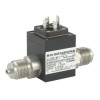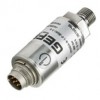Differential pressure transducers with amplified volts output for measuring the dp of liquids and gases.
DP voltage output transducers are typically used on building management systems where a 0 to 10 volt dc signal is often used.
Amplified voltage output differential pressure transducers for dp measurement with 3 wire 0-5, 1-5, 0-10, 1-10 volt outputs.
Products
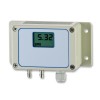 DPS200 HVAC Differential Pressure Transmitter - Differential air pressure sensor with a 10 volt or a 4-20mA output for building ventilation applications. Ranges from 0 to 6 mbar up to 0 to 1000 mbar.
DPS200 HVAC Differential Pressure Transmitter - Differential air pressure sensor with a 10 volt or a 4-20mA output for building ventilation applications. Ranges from 0 to 6 mbar up to 0 to 1000 mbar. DPS300 User Switchable Pressure Range, Volts or Current Output Low DP Sensor - The DPS 300 is a low range HVAC differential pressure sensor. The lowest possible pressure range is 0...100 pascals. 2 or 3 switchable pressure ranges, plus volts or current output are included with most standard configurations.
DPS300 User Switchable Pressure Range, Volts or Current Output Low DP Sensor - The DPS 300 is a low range HVAC differential pressure sensor. The lowest possible pressure range is 0...100 pascals. 2 or 3 switchable pressure ranges, plus volts or current output are included with most standard configurations.
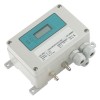 DPS Low Differential Pressure Transmitter
DPS Low Differential Pressure Transmitter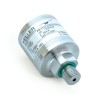 41X High Precision Low Range Pressure Transmitter
41X High Precision Low Range Pressure Transmitter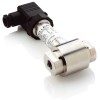 PD33X High Accuracy Differential Pressure Transmitter
PD33X High Accuracy Differential Pressure Transmitter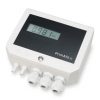 PrimAtü 10 Low Cost Low Range Differential Air Pressure Transducer
PrimAtü 10 Low Cost Low Range Differential Air Pressure Transducer
Applications
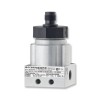 5 psi dp 0-10V out air pressure sensor for automation flow rate testing use on a 15psi line - A low range differential pressure sensor for manufacturing automation flow rate testing use to measure pressure of air over a range of 0 to 5 psi diff on a 15 psi air line from two G1/8 female process connections, and sending the corresponding 0-10Vdc signal through the integral cable electrical connection.
5 psi dp 0-10V out air pressure sensor for automation flow rate testing use on a 15psi line - A low range differential pressure sensor for manufacturing automation flow rate testing use to measure pressure of air over a range of 0 to 5 psi diff on a 15 psi air line from two G1/8 female process connections, and sending the corresponding 0-10Vdc signal through the integral cable electrical connection. 100mbar dp range 0-5Vdc amplified output air pressure sensor for aerospace research test rig use - A pressure sensor with internal amplifier for aerospace research test rig use to measure pressure of air over a range of 0 to 100 mbar differential from two 6mm flexible tubing connections, and sending the corresponding 0-5Vdc signal through the DIN plug electrical connection.
100mbar dp range 0-5Vdc amplified output air pressure sensor for aerospace research test rig use - A pressure sensor with internal amplifier for aerospace research test rig use to measure pressure of air over a range of 0 to 100 mbar differential from two 6mm flexible tubing connections, and sending the corresponding 0-5Vdc signal through the DIN plug electrical connection.
 10 mbar differential 0-10Vdc output air pressure sensor for building management use
10 mbar differential 0-10Vdc output air pressure sensor for building management use 0.1 inH2O differential range 0-10Vdc output between rooms air pressure sensor
0.1 inH2O differential range 0-10Vdc output between rooms air pressure sensor 20 kPa negative differential range air pressure gauge and sensor with tubing fitting
20 kPa negative differential range air pressure gauge and sensor with tubing fitting 20 Pa DP range 0-10V output air pressure sensor for building management use
20 Pa DP range 0-10V output air pressure sensor for building management use
- Vacuum differential pressure transducer with 60kPa range
- 5 psi delta air pressure sensor with 0 to 10 volt output
- 1 psi delta air pressure sensor with 0 to 10 volt output
- Air blower 100 inWG range differential pressure transducer
- 50 psi wet/wet 0-10 volt output differential pressure transducer
- 10kPa differential range water pressure sensor & panel mount digital display
Product Types
 Low Range DP Voltage Output Transducers - Low pressure range dp transducers for measuring draft pressures in ventilation systems or air extraction systems.
Low Range DP Voltage Output Transducers - Low pressure range dp transducers for measuring draft pressures in ventilation systems or air extraction systems.
Related Product and Application Guides
Product Help
Specifying voltage output differential pressure transducer requirements
Some questions to ask when defining the product requirements for a voltage output differential pressure transducer.
Differential pressure range
What is the highest differential pressure you need to measure?
Are the high and low pressure side always the same way round, or could they switch around? If the high and low pressure side is likely to reverse back and forth, then you will need to specify a bidirectional or compound range to cover the changing direction of pressure.
Do you need to change the dp range for a different process or location? Some differential pressure transducers allow the range to be adjusted by the user. Rangeable voltage signal dp transducers are adjusted manually by internal screws or buttons which are accessed by removing a waterproof lid or cap. Intelligent dp transmitters are adjusted via a in-built user interface, digital interface and associated software, or a special user hand terminal.
Static line pressure
What could be the highest pressure measured at either of the two process connections?
This is the general system pressure and is often significantly higher than the differential pressure measurement range. The static line pressure rating of amplified volts out dp transducers will vary enormously from one type to another, so it is important to pay special attention to this parameter, since it could lead to mechanical failure if an inadequate rating is selected.
Is there a risk that full static line pressure could be applied to one side of the voltage out differential pressure transducer? The line pressure rating does not necessarily mean that this pressure can be applied to one-side only. Most manufacturers will make it clear on their product data sheets whether the maximum static line pressure can only be applied on both sides simultaneously, or is protected from it being applied on one side only.
Overpressure
Is there a chance that the normal operating differential pressure range could be exceeded by a pressure surge or a process problem?
Maximum overpressure is the amount of differential pressure that the transducer can withstand beyond 100% of the dp range, without pushing the performance outside of specification limits.
The overpressure rating is typically expressed as multiples of the dp range, e.g. 2x, 4x.
Bidirectional or compound differential pressure ranges, which are a combination of a positive and negative pressure range component, should have two overpressure ratings.
If the volts output dp transducer will only allow full static line pressure to be applied to both sides at the same time, then take care to check the negative overpressure rating is adequate. Depending on the differential sensing technology utilised, the negative overpressure rating maybe significantly lower than the positive overpressure rating.
Where a voltage differential pressure transducer is protected against the full static line pressure being applied to one side only, then the positive and negative overpressure rating will equal the max static line pressure rating.
Checklist for voltage signal differential pressure transducer requirements
Define your volts output differential pressure transducer requirements using this checklist:
- Differential pressure range?
- Static line pressure?
- Overpressure?
- Media type?
- Media temperature range?
- Environmental conditions?
- Signal output? 0-10Vdc
- Power supply?
- Measurement accuracy?
- Electrical connection?
- Process connection?
- Certification?


